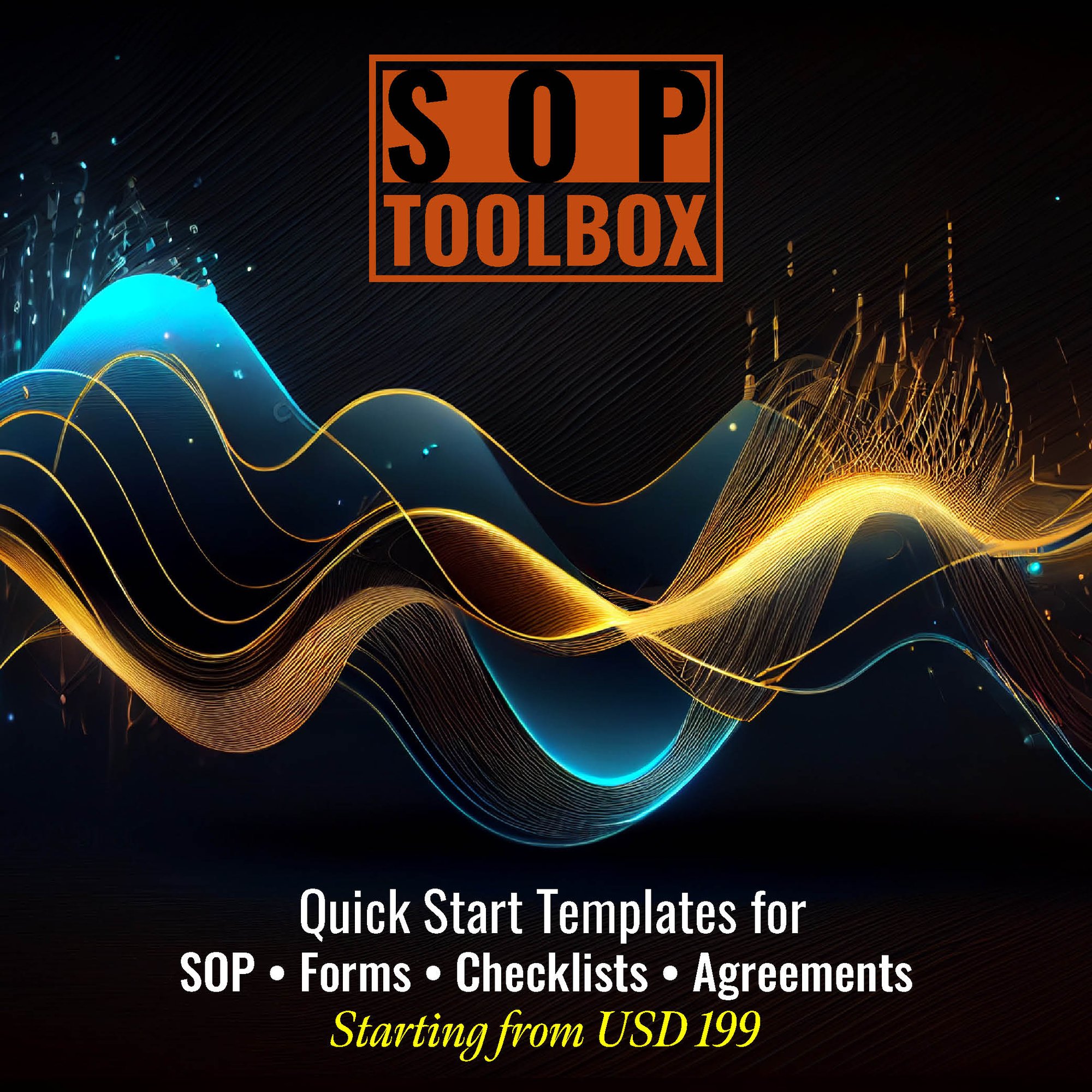The absence of an "SOP Manual for Other Community Housing Services" could result in various adverse consequences within the community housing sector. Without standardized operating procedures (SOPs), there may be inconsistencies in housing management, tenant services, and community engagement. This lack of guidance could lead to operational inefficiencies, mismanagement of resources, and challenges in delivering quality housing services.
Moreover, the absence of a comprehensive SOP manual could hinder employee training and onboarding processes. Without clear guidelines, there may be difficulties in maintaining a skilled and well-coordinated workforce, impacting the overall efficiency of community housing operations.
Additionally, the lack of SOPs may lead to difficulties in compliance with housing regulations and standards, potentially exposing the organization to legal and reputational risks. In essence, the consequence of not having an "SOP Manual for Other Community Housing Services" includes potential operational inefficiencies, decreased service quality, and challenges in maintaining a well-organized and compliant community housing environment.
CLICK HERE to download the List of SOPs Document in PDF format. Please share this document with your clients, colleagues and senior officers.
Top 50 Standard Operating Procedures (SOPs) for Community Housing Services
SOP-413-001: Standard Operating Procedure for Resident Application Process
SOP-413-002: Standard Operating Procedure for Lease Agreement
SOP-413-003: Standard Operating Procedure for Rent Collection
SOP-413-004: Standard Operating Procedure for Maintenance Requests
SOP-413-005: Standard Operating Procedure for Property Inspections
SOP-413-006: Standard Operating Procedure for Move-In and Move-Out Procedures SOP-413-007: Standard Operating Procedure for Community Safety
SOP-413-008: Standard Operating Procedure for Resident Communication
SOP-413-009: Standard Operating Procedure for Community Events
SOP-413-010: Standard Operating Procedure for Visitor Policies

SOP-413-011: Standard Operating Procedure for Parking Management
SOP-413-012: Standard Operating Procedure for Waste Management
SOP-413-013: Standard Operating Procedure for Financial Management
SOP-413-014: Standard Operating Procedure for Vendor Management
SOP-413-015: Standard Operating Procedure for Accessibility Compliance
SOP-413-016: Standard Operating Procedure for Community Rules and Policies
SOP-413-017: Standard Operating Procedure for Crisis Management
SOP-413-018: Standard Operating Procedure for Technology Use
SOP-413-019: Standard Operating Procedure for Training for Staff
SOP-413-020: Standard Operating Procedure for Data Protection and Privacy
SOP-413-021: Standard Operating Procedure for Energy Efficiency
SOP-413-022: Standard Operating Procedure for Pest Control
SOP-413-023: Standard Operating Procedure for Lease Violations
SOP-413-024: Standard Operating Procedure for Health and Safety Protocols
SOP-413-025: Standard Operating Procedure for Community Upkeep
SOP-413-026: Standard Operating Procedure for Neighbor Disputes
SOP-413-027: Standard Operating Procedure for Key Management
SOP-413-028: Standard Operating Procedure for Insurance Coverage
SOP-413-029: Standard Operating Procedure for Resident Education Programs
SOP-413-030: Standard Operating Procedure for Community Governance

SOP-413-031: Standard Operating Procedure for Social Media Management
SOP-413-032: Standard Operating Procedure for Evacuation Procedures
SOP-413-033: Standard Operating Procedure for Common Area Reservation
SOP-413-034: Standard Operating Procedure for Playground Safety
SOP-413-035: Standard Operating Procedure for Community Newsletter
SOP-413-036: Standard Operating Procedure for Community Recognition Programs
SOP-413-037: Standard Operating Procedure for Community Diversity and Inclusion
SOP-413-038: Standard Operating Procedure for Internet and Cable Services
SOP-413-039: Standard Operating Procedure for Resident Meetings
SOP-413-040: Standard Operating Procedure for Security Camera Use
SOP-413-041: Standard Operating Procedure for Fitness Center Management
SOP-413-042: Standard Operating Procedure for Package Delivery Procedures
SOP-413-043: Standard Operating Procedure for Smoking Policies
SOP-413-044: Standard Operating Procedure for Pet Policies
SOP-413-045: Standard Operating Procedure for Community Garden Management
SOP-413-046: Standard Operating Procedure for Technology Upgrades
SOP-413-047: Standard Operating Procedure for Disaster Preparedness Drills
SOP-413-048: Standard Operating Procedure for Snow and Ice Removal
SOP-413-049: Standard Operating Procedure for Community Surveys
SOP-413-050: Standard Operating Procedure for Records Retention

.jpg?width=645&height=337&name=Standard%20Operating%20Procedure%20-%20SOP%20ToolBox%20(1).jpg)
SOP ToolBox: If you are reading these lines, I am sure you are looking for Standard Operating Procedure guidelines or SOPs itself. In both the cases, searching in internet will not be yielding any great help. Because no company shares their SOP Development Process and certainly don’t share their SOP Documents. The best way to develop an SOP is creating one for yourself. At Fhyzics, we write SOPs day-in and day-out for companies across the globe including some of the Fortune 500 organisations. Our charge ranges from USD 5000 to USD 50000 depending upon the number of processes to be covered. Certainly, this is not affordable to small and mid-size organisations. Hence, we decided to create this SOP ToolBox to disseminate our 8-Step SOP Development Life-Cycle and best practices at an unbelievably low price.
I always say, writing an SOP is somewhere between art and science. So far you may be clueless on where to start and how to progress on an SOP? This will not be the case after you diligently go through this SOP ToolBox. We have summarised all our secrets here to get you started and to deliver a stunning SOP to your management.
2. Standard Operating Procedures (SOP) Manual for Finance Department
3. Standard Operating Procedures (SOP) Manual for Customer Service
4. Standard Operating Procedures (SOP) Manual for CRM Department
5. Standard Operating Procedures (SOP) Manual for Credit Department
6. Standard Operating Procedures (SOP) Manual for Treasury Department
7. Standard Operating Procedures (SOP) Manual for Human Resources (HR) Department
8. Standard Operating Procedures (SOP) Manual for Training Department
9. Standard Operating Procedures (SOP) Manual for Learning & Development Department
10. Standard Operating Procedures (SOP) Manual for Administration Department
11. Standard Operating Procedures (SOP) Manual for Front Office
12. Standard Operating Procedures (SOP) Manual for House Keeping
13. Standard Operating Procedures (SOP) Manual for Safety Department
14. Standard Operating Procedures (SOP) Manual for Security Department
15. Standard Operating Procedures (SOP) Manual for Facilities Management Department
16. Standard Operating Procedures (SOP) Manual for Vigilance Department
17. Standard Operating Procedures (SOP) Manual for Legal Department
18. Standard Operating Procedures (SOP) Manual for Information Technology (IT) Department
19. Standard Operating Procedures (SOP) Manual for Sales & Marketing Department
20. Standard Operating Procedures (SOP) Manual for Design & Engineering
21. Standard Operating Procedures (SOP) Manual for Procurement Department
22. Standard Operating Procedures (SOP) Manual for Production
23. Standard Operating Procedures (SOP) Manual for SRM Department
24. Standard Operating Procedures (SOP) Manual for Supply Chain Department
25. Standard Operating Procedures (SOP) Manual for Warehouse
26. Standard Operating Procedures (SOP) Manual for New Product Development Department
27. Standard Operating Procedures (SOP) Manual for Research and Development
28. Standard Operating Procedures (SOP) Manual for Quality Department
29. Standard Operating Procedures (SOP) Manual for Calibration Department
30. Standard Operating Procedures (SOP) Manual for Maintenance Department
-
Energy assistance programs
-
Home construction organizations, work (sweat) equity
-
Housing assistance agencies
-
Housing repair organizations, volunteer
-
Transitional housing agencies
-
Volunteer housing repair organizations
-
Work (sweat) equity home construction organizations
Differences:
- Community housing is delivered by community organisations. If you accept an offer of community housing, your tenancy will be managed by a community housing organisation.
- Public housing is delivered by Housing ACT. If you accept an offer of public housing, your tenancy will be managed by Housing ACT.
- Community housing organisations may charge tenants a rental bond. Rental bonds are not required in public housing. Housing ACT may be able to provide a bond loan to assist with access to community housing (see the ‘Rental Bond Loans’ Fact Sheet for more information).
- If eligible, some community housing organisations may require tenants to pay an amount equivalent to 100% of any Commonwealth Rent Assistance entitlement. Contact the community housing organisations directly for more information.
- Some community housing organisations also offer group share options, where tenants have their own bedroom but other facilities (such as the bathroom, kitchen and laundry) may be shared. See the individual Fact Sheets for more information.
- Some community housing organisations also offer ‘Affordable Housing’ where rent is calculated at 74.9% of market rent (rather than 25% per cent of assessable income). See the individual Fact Sheets for more information.
- Housing ACT requires community housing organisations to meet certain standards for housing provision and assistance. These standards are set out in funding contracts, through the Housing Assistance Act 2007 and the National Regulatory System for Community Housing.
- Poverty, unemployment, and lack of affordable housing are commonly recognized causes of homelessness. These risk factors can be exacerbated by personal vulnerabilities such as mental and substance use disorders, trauma and violence, domestic violence, justice-system involvement, sudden serious illness, divorce, death of a partner, and disabilities.
Housing and shelter programs can help address the root causes of homelessness through a range of essential recovery support services, including mental and substance use disorder treatment, employment, and mainstream benefits. Types of housing and shelter programs include:
- Emergency shelters are often where people experiencing economic shock first turn for support through a wide range of services.
- Transitional housing typically involves a temporary residence of up to 24 months with wrap-around services to help people stabilize their lives.
- Permanent supportive housing offers safe and stable housing environments with voluntary and flexible supports and services to help people manage serious, chronic issues such as mental and substance use disorders.
- Providing permanent supportive housing on a housing first basis—without requiring transitional steps or demonstrated sobriety—is effective for people experiencing chronic homelessness. People with a serious mental illness, substance use disorder, or co-occurring mental and substance use disorder have demonstrated similar or better housing stability and substance use, compared to those placed in housing with pre-requisites. Large-scale studies demonstrating the benefits include the Collaborative Initiative to End Chronic Homelessness
- Building & Construction Standards| ASTM International
https://www.astm.org/industry/building-and-construction-standards.html - ISO/TC 59| International Organization for Standardization
https://www.iso.org/committee/49070/x/catalogue/ - ISO 91.040.01| International Organization for Standardization
https://www.iso.org/ics/91.040.01/x/
-
Journal of Building Engineering| Elsevier
https://www.journals.elsevier.com/journal-of-building-engineering -
Construction and Building Materials – Journal| Elsevier
https://www.journals.elsevier.com/construction-and-building-materials
This SOP gives an overview of Other Community Housing Services, Market insights, this industry comprising units, Differences, Types of housing and shelter programs, International Standard Regarding this Industry, List of the Industry’s Top Leading Companies in the World, Journals and Magazine Related to this Industry are all discussed and listed above.
Research By : Eshwaran Murugappan
Please click here to review the SOP Templates’ Terms & Conditions.
Keywords: sop, manual, policy, sop meaning, sop full form, standard operating procedure, full sop, user manual, sop is, user guide, instruction manual, owners manual, sample sop, operators manual, sop example,standard operating procedure examples, abbreviation sop, standard operating procedure sample, milk sop, sop document, sop process,m manual, operating procedures, operating process, sop meaning in hindi, standard procedure, sop standard operating procedure, sop top, sop writing, standard operating procedures manual, sop meaning in english, sample sop for mba, standard operating procedures examples in office, product manual, sample sop for ms, maintenance manual, sop security, sop in research, sop in business, whats sop, standard of operation, sop set, sop procedure, sop marketing,sop training, sop hotel, sop, sop meaning business, sop form, sba sop,sop software, help manual, sop it, army sop, company sop, sop sap, o m manual, standard operating procedure examples for small business, shop manual, sop manual, sop meaning in business, purpose of standard operating procedures, sop full meaning, standard operating procedure meaning, sop military, sop standard, sop meaning medical, hr sop, sop production, purpose of sop, sop management, warehouse sop, sales sop, sop pharma, sop manufacturing, sop creation, sop laboratory, ms sop, sop full form in hindi, sop front office, sop customer service, sop online, gmp sop, sop purchasing, sop pharmacy, sop safety, sop for project management,sample sop for australian student visa, sop meaning in tamil, sop system, best sop, sop up, sop in english, sop for mechanical engineering, sop for university,sop in malay, sop lab, sop for business analytics, sop model, sop in pharmacy, developing sops, standard operating procedure examples manufacturing, sop full form in retail,sop full form in medical, sop engineering, sop application, writing standard operating procedures, procurement sop, sop maintenance,standard operating procedure nhs, sop clinical trial, sop operations,sop in construction, operating procedures manual, standard operating procedure ppt, standard procedure meaning, sop ppt, a sop, sop document meaning, sop def, sop full form in safety, sop quality control, sop for college, sop quality, sop service, types of sop, sop for engineering management, sop document sample, benefit of sop, preparing sop, standard operating procedure in hindi, sop for visa, sop compliance, sop protocol, sop aviation, sop meaning in chat, standard operating process, sop meaning military, sop for business management, standard operating procedure software, sop list, sop medical, sop logistics, sop project, sop for it department, sop call center, standard work procedures, sba sop 50 10, sop meaning in logistics, standard operating procedure laboratory, test sop, sop sample for ms, drafting sop, sops meaning in tamil, sops meaning in telugu, sop automotive, standard operating system, sop cafe, sop slideshare, sop ap, sop bank, sop in retail, creating standard operating procedures, sop admin, document control sop, pharmaceutical sop,sop in pharmaceutical industry, statement of purpose harvard, sop examples for ms, quality assurance sop, sop in clinical research, nursing sop, sop for transportation, sop policies, sops are specific to a process, sop in hindi, standard operating procedure for warehouse picking, master sop, list of sop for pharma, pharmaceutical sop examples, types of standard operating procedures, retail sop, sample sop for ms in mechanical engineering, standard operating protocol,sop supply chain, system operating procedure, sop rules, example of sop in research, sop in food industry, sop for international business management, sop for hospitality management, sop for hr department, army sop example, sop standard operating, office sop, hr standard operating procedures, preventive maintenance sop, sop for purchase department, human resources sop, fire department sops, information technology sop, operating procedure example, administration sop,sop for retail store, indian sop, construction management sop, sop hotel front office, example sop document, standard and procedures,working sop, sop for maintenance department, sop hrd department,sop full form in hotel industry, sop full, sop for human resource management, laboratory sop examples, standard operating procedure for quality control, sop for ms in mechanical engineering, sop meaning army, security standard operating procedures, sop machine, sample sop for internship, sop for hotel management, sample sop for masters, qa sop, developing standard operating procedures, standard operating procedure document, product recall sop, marketing statement of purpose, it standard operating procedures, equipment sop, sop purpose example, sop shipping, sop for sales and marketing,converting pos to sop, workshop sop, standard operating procedure manufacturing, digital marketing standard operating procedures, following standard operating procedures, sop ki full form, sop for nursing procedures, an sop, purchase sop for manufacturing company, sop a, statement of purpose for mba marketing, full meaning of sop, sop for research internship, research sop sample,vendor qualification sop, sop purchasing and receiving, sop meaning in visa, sop for admission, standard operating procedure medical office, sop in industry, sop sales marketing, navy sop, project management standard operating procedures, sop it support, standard operating manual, security operating procedures, statement of purpose for international business, procurement standard operating procedures, communication sop, sop full form in pharma, minimum sop, sop health and safety, product sop, sop for marketing department, sop in medical terms, sales standard operating procedure, sop purchase order, department sop, customer service standard operating procedures, clinical sop, marketing standard operating procedure, sop standard operating procedure example, construction standard operating procedures, standard of operations procedures manual sample, sop for facility management, sop full form in education, standard operating procedure in food industry, visa sop,sop for business administration, company sop meaning, sop work, sop operating procedure, sop for summer internship in engineering sample, general administration sop, sop for administrative duties.
Our SOP Templates’ clients are from the following States and Countries:
Alabama, Alaska, Arizona, Arkansas, California, Colorado, Connecticut, Delaware, Florida, Georgia, Hawaii, Idaho, Illinois, Indiana, Iowa, Kansas, Kentucky, Louisiana, Maine, Maryland, Massachusetts, Michigan, Minnesota, Mississippi, Missouri, Montana, Nebraska, Nevada, New Hampshire, New Jersey, New Mexico, New York, North Carolina, North Dakota, Ohio, Oklahoma, Oregon, Pennsylvania, Rhode Island, South Carolina, South Dakota, Tennessee, Texas, Utah, Vermont, Virginia, Washington, West Virginia, Wisconsin, Wyoming.
Afghanistan, Albania, Algeria, Andorra, Angola, Antigua and Barbuda, Argentina, Armenia, Australia, Austria, Azerbaijan, Bahamas, Bahrain, Bangladesh, Barbados, Belarus, Belgium, Belize, Benin, Bhutan, Bolivia, Bosnia and Herzegovina, Botswana, Brazil, Brunei Darussalam, Bulgaria, Burkina Faso, Burundi, Cabo Verde, Cambodia, Cameroon, Canada, Central African Republic, Chad, Chile, China, Colombia, Comoros, Congo (Republic of the), Costa Rica, Croatia, Cuba, Cyprus, Czech Republic (Czechia), Democratic People’s Republic of Korea (North Korea), Democratic Republic of the Congo, Denmark, Djibouti, Dominica, Dominican Republic, Ecuador, Egypt, El Salvador, Equatorial Guinea, Eritrea, Estonia, Eswatini, Ethiopia, Fiji, Finland, France, Gabon, Gambia, Georgia, Germany, Ghana, Greece, Grenada, Guatemala, Guinea, Guinea-Bissau, Guyana, Haiti, Honduras, Hungary, Iceland, India, Indonesia, Iran, Iraq, Ireland, Israel, Italy, Jamaica, Japan, Jordan, Kazakhstan,Kenya, Kiribati, Kuwait, Kyrgyzstan, Lao People’s Democratic Republic (Laos), Latvia, Lebanon, Lesotho, Liberia, Libya, Liechtenstein, Lithuania, Luxembourg, Madagascar, Malawi, Malaysia, Maldives, Mali, Malta, Marshall Islands, Mauritania, Mauritius, Mexico, Micronesia (Federated States of), Moldova, Monaco, Mongolia, Montenegro, Morocco, Mozambique, Myanmar (Burma), Namibia, Nauru, Nepal, Netherlands, New Zealand, Nicaragua, Niger, Nigeria, North Macedonia (formerly Macedonia), Norway, Oman, Pakistan, Palau, Panama, Papua New Guinea, Paraguay, Peru, Philippines, Poland, Portugal, Qatar, Republic of Korea (South Korea), Republic of the Congo, Romania, Russian Federation (Russia), Rwanda, Saint Kitts and Nevis, Saint Lucia, Saint Vincent and the Grenadines, Samoa, San Marino, Sao Tome and Principe, Saudi Arabia, Senegal, Serbia, Seychelles, Sierra Leone, Singapore, Slovakia, Slovenia, Solomon Islands, Somalia, South Africa, South Sudan, Spain, Sri Lanka, Sudan, Suriname, Sweden, Switzerland, Syrian Arab Republic (Syria), Tajikistan, Thailand, Timor-Leste, Togo, Tonga, Trinidad and Tobago, Tunisia, Turkey, Turkmenistan, Tuvalu, Uganda, Ukraine, United Arab Emirates, United Kingdom of Great Britain and Northern Ireland, United Republic of Tanzania, United States of America, Uruguay, Uzbekistan, Vanuatu, Venezuela, Viet Nam, Yemen, Zambia, Zimbabwe.
Fhyzics supports organisations in developing the following documentations:
Standard Operating Procedures (SOPs), Work Instructions, Policies and Procedures, Process Flow Diagrams, Job Descriptions, Training Manuals, Employee Handbooks, Compliance Guidelines, Quality Assurance Manuals, Health and Safety Procedures, Risk Management Plans, Business Continuity Plans, Internal Audit Procedures, Incident Reporting Forms, Performance Management Guidelines, Change Management Procedures, Vendor Management Guidelines, Customer Service Protocols, IT Security Policies, IT Support Documentation, Disaster Recovery Plans, Operational Checklists, Data Management Policies, Confidentiality Agreements, Non-Disclosure Agreements, Employee Onboarding Procedures, Employee Exit Procedures, Performance Appraisal Forms, Employee Code of Conduct, Conflict Resolution Procedures, Product Development SOPs, Supply Chain Management Guidelines, Procurement Guidelines, Inventory Management SOPs, Shipping and Receiving Procedures, Production Scheduling SOPs, Maintenance Procedures, Equipment Calibration Documents, Environmental Compliance Documentation, Sustainability Policies, Customer Feedback Forms, Marketing Strategies, Advertising Guidelines, Brand Management Guidelines, Product Packaging SOPs, Laboratory Testing Procedures, Regulatory Compliance Documentation, Tax and Accounting Procedures, Contract Management Procedures, Legal Compliance Guidelines, Financial Reporting Procedures, Budgeting Procedures, Internal Control Procedures, Fraud Prevention Policies, Asset Management Guidelines, Purchase Order Procedures, Sales and Distribution Guidelines, Client Contracts, Customer Return Policies, Internal Communication Protocols, Vendor Evaluation Forms, Product Safety Standards, Workplace Health and Safety Standards, Public Relations Procedures, Social Media Management Guidelines, Crisis Management Plans, Employee Grievance Procedures, Privacy and Data Protection Policies, Digital Transformation Guidelines, Innovation Management Procedures, Continuous Improvement Guidelines, Strategic Planning Documents, Corporate Social Responsibility (CSR) Guidelines, Audit Trails and Records, Employee Training and Development Records, Succession Planning Documents, Talent Acquisition Procedures, Team Collaboration Protocols, Employee Benefit Plans, Workplace Diversity Guidelines, Time and Attendance Tracking, Payroll Procedures, Employee Leave Policies, Conflict of Interest Policy, Emergency Response Procedures, Environmental Impact Assessment Procedures, Transportation and Logistics Procedures, Inventory Control Forms, Warehouse Management Guidelines, Product Lifecycle Management SOPs, Customer Satisfaction Surveys, Third-Party Risk Assessment Guidelines, Technology Adoption Policies, Software Licensing Guidelines, Security Incident Response Procedures, Supply Chain Risk Management Policies, Product Recall Procedures, Food Safety Guidelines, Employee Wellness Programs, Workplace Ergonomics Guidelines.
















